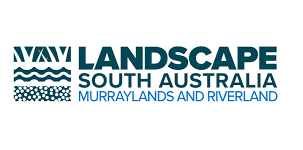
Background
Sherwood Estates manages 200 hectares of wine-grapes in the Riverland, South Australia, comprising 17 varieties. Chardonnay and Shiraz are the backbone of the business, along with Cabernet Sauvignon, Pinot Noir and the Mediterranean variety, Bianco d’Alessano, which is well suited to the hot and dry climate of the Riverland.
Sherwood Estates is operated and managed by the third and fourth generations of the Proud family, Brett, Andrew, and Andrew’s family Brayden, Alysha and son-in-law Ben. The Proud family, who have been farming in the Riverland for almost 100 years, are continually evolving their practices to improve the long-term sustainability of their vineyards and wine brand.
The Proud family know only too well how vital irrigation water is to the sustainability of their vineyards. The average annual rainfall in Loxton is less than 300 mm, meaning that vines growing in the region are totally reliant on irrigation water sourced from the Murray River. When irrigation water is restricted, as it was during the millennium drought, yields can be significantly reduced. When water prices are high, irrigation can easily represent one-third or more of production costs if purchased on the open market.
Irrigation practices
“Irrigation is crucial to Sherwood Estates’ viticulture, therefore investment in irrigation technology and basic maintenance like dripper tube cleaning and flushing is ‘normal’.” – Brett Proud
A survey on irrigation practices of inland wine regions conducted by the AWRI in December 2021 found that, like Sherwood Estates, 85% of growers in the Riverland have moved away from flood and furrow irrigation to more efficient drip irrigation systems (see survey report for more details). Drip irrigation systems require regular monitoring and maintenance to keep them working efficiently. However, survey results show that 28% of respondents never check the uniformity of their dripper output, 17% have never performed any pressure checks across their irrigation system, and 17% have never flushed their driplines. In comparison, Sherwood Estates regularly maintains its irrigation system throughout the season and as a result, has been able to maintain consistent emitter outputs across its vineyard – a key step towards making sure every vine in the vineyard gets the amount of water it needs.
This case study explores the practices that Sherwood Estates employs throughout the year to keep its irrigation system performing at its best and ensure wine-grape quality and productivity are maintained for the sustainability of the business.
Sherwood Estates’ irrigation infrastructure and maintenance
Sherwood Estates, like most wine-grape growers in the Riverland, sources its irrigation water from the Murray River via an irrigation trust. Access to river water is critical for sustainable wine-grape production in the Riverland but the river water brings with it both suspended clay and organic material. It is therefore essential to have effective filtration infrastructure and a regular maintenance program to avoid emitter blockages.
At Sherwood Estates, the main filters are automatically flushed during operation as well as being thoroughly cleaned manually twice a year. The back-up filters and dripper tube are cleaned at least four times a year, twice with hydrogen peroxide and twice with water following the flushing procedure outlined in the AWRI irrigation maintenance video.
Hydrogen peroxide helps to remove organic matter from the system while regular flushing with water helps remove clay. In years of high flows from the Darling River, when sediment levels are much higher, additional back-up filter and drip tube flushing is necessary.
It takes approximately 40 labour hours for Sherwood Estates to complete one sub-main and dripper tube flush over 200 ha. This is a significant time commitment, but Brett explains that the performance of the irrigation system would be seriously compromised if the filters and dripper tube were not cleaned and maintained, commenting that “The ability of Sherwood Estates to deliver high quality wine-grapes to our customers is put at risk if the irrigation system is compromised”.
Sherwood Estates invests in technology which enables the operations team to have excellent control over the vineyard and the quality of the wine-grapes produced but they haven’t forgotten the basics. “It would be pointless to have invested into precision viticulture technology while at the same time have drip tubes and back-up filters blocked with sediment and organic material”, says Brett. Brett explains that maintaining filtration infrastructure and flushing drip tubes is integral to maintaining the productivity of Sherwood Estates’ vines and the quality of the wine-grapes produced. Ultimately, the sustainability of Sherwood Estates’ business depends on good water management with good irrigation maintenance being key.
Find out more
For more information and resources on irrigation monitoring and maintenance, including two ‘how to’ videos, visit the AWRI’s water management webpage.
Acknowledgement
This work was funded by Landscapes SA. The AWRI and SARDI would like to thank Brett Proud and Sherwood Estates for taking part in the benchmarking project and for generously sharing his knowledge and experience regarding irrigation monitoring and maintenance.


